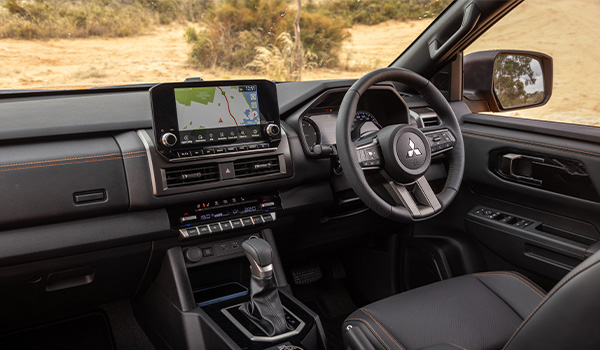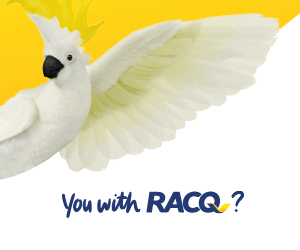Based on ladder-frame underpinnings that will be shared with the forthcoming Nissan Navara, the new Triton is powered by a gutsy 2.4-litre bi-turbo four-cylinder diesel engine that produces a category-competitive 150kW/470Nm.
That’s enough to put the Mitsubishi workhorse back in the hunt with leading four-cylinder powered rivals including the Ford Ranger (154kW/500Nm) and Toyota HiLux (150kW/500Nm).
The new model’s upgraded 3,500kg braked tow rating also represents a significant increase on its predecessor’s 3,100kg limit, placing the Triton on more a competitive footing in the load-lugging stakes.
Only the higher-spec GLS and GSR dual-cab 4x4 variants were available to sample at the launch, with other body styles and 4x2 variants set to join the range later this year.
The Triton will eventually be available in cab-chassis, club-cab and dual-cab body styles in GLX, GLX+, GLS, and flagship GSR variants, although not all trim grades will be offered on all body styles.
Dual-cab pricing starts at $43,690 for the GLX 4x2 and rises through GLX, GLX+, and GLS 4x4 variants to top out with the $63,840 Triton GSR tested here.
The various trim grades are differentiated by different wheel and tyre packages, styling attributes and interior finishes.
Suspension enhancements include a new high-mount double wishbone setup with more travel and larger diameter shock absorbers up front, while at the rear a three-leaf semi-elliptical spring replaces the previous five-leaf setup.
The dual-cab is 15mm longer than its predecessor and sits on a wheelbase that’s been stretched by 130mm, which Mitsubishi claims benefits ride comfort, handling stability and load capacity.
The vehicle track has also been widened by 50mm to provide a more sure-footed stance, and there’s 49mm more front shoulder room in the cabin.
The tray is 35mm longer and the floor height lowered 42mm for easier loading.
Detail changes to the 2.4-litre bi-turbo diesel include a new higher-pressure fuel-injection system, improvements to the intercooler and exhaust, lighter-weight pistons, variable valve-lift timing on intake and exhaust and the inclusion of maintenance-free hydraulic valve lash adjusters.
The engine hitches to a six-speed automatic transmission which has had its ratios tweaked but is otherwise carried over from the previous model.
The gearbox is down a couple of cogs on current best practice but gets the job done and there’s little need to criticise the quality of its response or shift feel.
All 4x4 variants offer high and low range but the GLS and GSR adopt Mitsubishi’s Super Select 4WD-II system, which gives the ability to switch from 2H to 4H on the fly and remain in that mode on sealed roads without risking diff damage.

Price: $63,840 (MRLP)
Powertrain: Aluminium-block 2.4-litre 16V MIVEC DiD diesel, twin turbocharged (150kW/470Nm), six-speed torque converter automatic, part- and full-time four-wheel drive.
ANCAP crash rating: Not rated
Fuel consumption (combined cycle): 7.7L/100km (203g/km CO2)
For: Impressive ride and handling, comfortable and roomy interior, improved tow rating, smooth and responsive turbodiesel, excellent warranty.
Against: Price hikes over predecessor, annoying driver alert systems.
Off-road performance in these variants is further enhanced with a standard rear differential lock, along with a Terrain Control system. Low range gearing of 38:1 ensures good crawl control over difficult terrain and is complemented by electronic systems including hill start assist, hill descent control, traction control and active LSD (brake control) on the front and rear axles.
Safety has been significantly upgraded with eight airbags and a raft of new driver assistance features, although the Triton had not received an ANCAP rating at the time of writing.
We drove both the GSR and GLS variants over an entertaining and occasionally challenging drive through the Adelaide Hills, which included some moderately difficult off-road sections where the Triton equipped itself well.
But it’s on the open road where the new model’s improvements in ride, handling, performance and NVH are best appreciated.
Unladen low-speed ride still feels a bit busy but the Triton settles down nicely out on the open road and feels well-balanced through bends.
The new engine is smooth, quiet and pleasingly responsive, with the twin-turbo technology delivering notable improvements to driveability and performance.
Higher pricing across the range means the new Triton is not the bargain it once was but it still undercuts many key rivals, while its comprehensive overhaul and equipment upgrades means it deserves to be on the shopping list of today’s dual-cab ute buyer.





